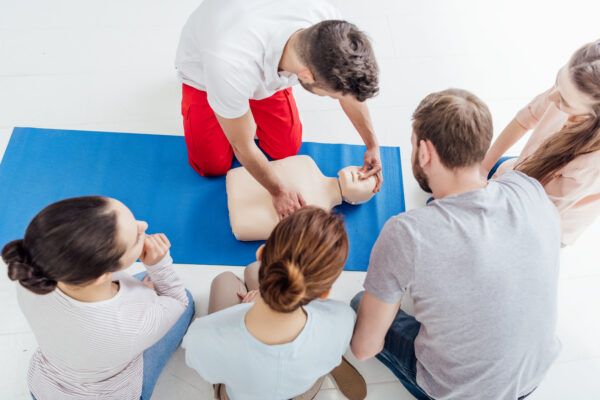Introduction
In the realm of emergency situation feedback, couple of skills are as essential and impactful as Cardiopulmonary Resuscitation (MOUTH-TO-MOUTH RESUSCITATION). The Most Recent CPR Guidelines in Australia: Staying Updated on Finest Practices is an extensive consider just how individuals can outfit themselves with the knowledge and abilities essential to save lives. As we delve into the ins and outs of these standards, we will discover numerous facets of CPR, including its relevance, methods for various age groups, the use of Automated External Defibrillators (AEDs), and the relevance of remaining present with qualification demands.
With abrupt heart attacks occurring suddenly and typically tragically, understanding CPR not only enhances individual preparedness however also fosters neighborhood durability. This short article intends to offer an alternative view of the current growths in CPR practices within Australia while resolving usual concerns surrounding this life-saving technique.
Understanding mouth-to-mouth resuscitation: A Lifesaving Technique
What is CPR?
Cardiopulmonary Resuscitation (CPR) is an emergency treatment executed when somebody experiences heart attack. It involves upper body compressions and, in many cases, rescue breaths to maintain blood circulation and oxygenation up until professional clinical assistance arrives.
The Relevance of mouth-to-mouth resuscitation in Saving Lives
CPR significantly boosts the possibilities of survival for people experiencing heart attack. According to statistics, instant mouth-to-mouth resuscitation can increase or triple a person's opportunity of survival. Given that several out-of-hospital cardiac arrests take place at home or public rooms, having more people learnt mouth-to-mouth resuscitation can lead to greater success rates.
The Most recent CPR Guidelines in Australia: Staying Upgraded on Finest Practices
Key Components of Effective CPR
Compression Deepness and Rate- The advised compression deepness for adults has to do with 5-6 cm deep at a price of 100-120 compressions per minute. Incorrect compression depth can substantially lower blood circulation and effectiveness.
- For grownups, focus on chest compressions alone if you are untrained or unsure. Trained people need to administer rescue breaths after every 30 compressions.
- AEDs are crucial devices that can bring back typical heart rhythm throughout a heart arrest. Knowing exactly how to use an AED efficiently is essential for any individual doing CPR.
Age-Specific Guidelines for CPR
Adult mouth-to-mouth resuscitation Techniques
- Focus on top notch breast compressions.
Child and Infant CPR Techniques
- Adjust compression depth and ratio according to age. Use 2 fingers for infants (under one year) and one hand for children (ages 1-8).
Special Situations Needing One-of-a-kind Approaches
CPR for Drowning Victims- Emphasize rescue breaths earlier than in typical situations considering that drowning sufferers commonly experience hypoxia.
- Understanding particular procedures customized for professional athletes can be important for prompt intervention.
Household Preparedness: Preparing Your Family
Creating a Home Emergency situation Plan
- Discuss emergency situation treatments with all family members.
Gathering Essential Equipment
- Keep a first aid package convenient in addition to an AED if possible.
CPR Qualification Requirements in Australia
How Long Does a CPR Certificate Last?
Most accreditations call for revival every 3 years; nevertheless, it's always smart to stay upgraded routinely via regional mouth-to-mouth resuscitation classes or online certification options.
Where Can You Get Your Certification?
Numerous organizations use both in-person and on the internet training courses throughout Australia.

Utilizing Online Resources for Certification
Benefits of Online mouth-to-mouth resuscitation Certification
- Flexible timetables allow individuals to find out at their very own pace.
Reputable Sources for Online Courses
Look for certified organizations like St John Ambulance or Red Cross Australia offering comprehensive on-line training modules.
Common Misconceptions Regarding CPR
" CPR Constantly Reboots the Heart": Myth vs Reality
While reliable early treatment increases opportunities of survival, it's important to recognize that not every effort at resuscitation will certainly be successful.
Statistics Reflecting Australia's Demand for Preparedness
CPR Success Rate Stats in Australia
Research shows that instant onlooker treatment can enhance survival prices by approximately 40%.
FAQs
What needs to I do if I witness someone collapse?
Immediately call emergency situation services and start performing top quality chest compressions until help arrives.
How do I recognize if someone needs CPR?
Look for indicators such as unresponsiveness or absence of breathing; if not sure, it's much better to start compressions immediately.
Is there a distinction between adult and child/infant CPR?
Yes! The techniques differ mainly worrying compression depth and breath ratio; describe age-specific guidelines accordingly.

Can I perform mouth-to-mouth resuscitation throughout COVID-19?
Current guidelines recommend focusing exclusively on breast compressions during pandemics unless you learn otherwise.
How frequently should I revitalize my skills?
It's a good idea to rejuvenate your skills every year also if your accreditation lasts 3 years due to potential adjustments in guidelines.
li25/ol6/hr3hr3/##
Conclusion
Staying informed regarding The CPR Courses Wagga Wagga - First Aid Pro most up to date Mouth-to-mouth Resuscitation Guidelines in Australia: CPR Training in Wagga Wagga - First Aid Pro Remaining Upgraded on Ideal Practices is essential not only for personal safety and security however likewise for neighborhood welfare. By recognizing proper techniques-- whether using sophisticated resuscitation abilities or using an AED correctly-- people can significantly enhance end results throughout emergency situations. Education and learning does not stop with qualification; regular technique makes certain preparedness when seconds count most. Whether you're taking neighborhood courses or opting for on the internet resources, make it your mission today-- since every second can indicate saving a life tomorrow!
